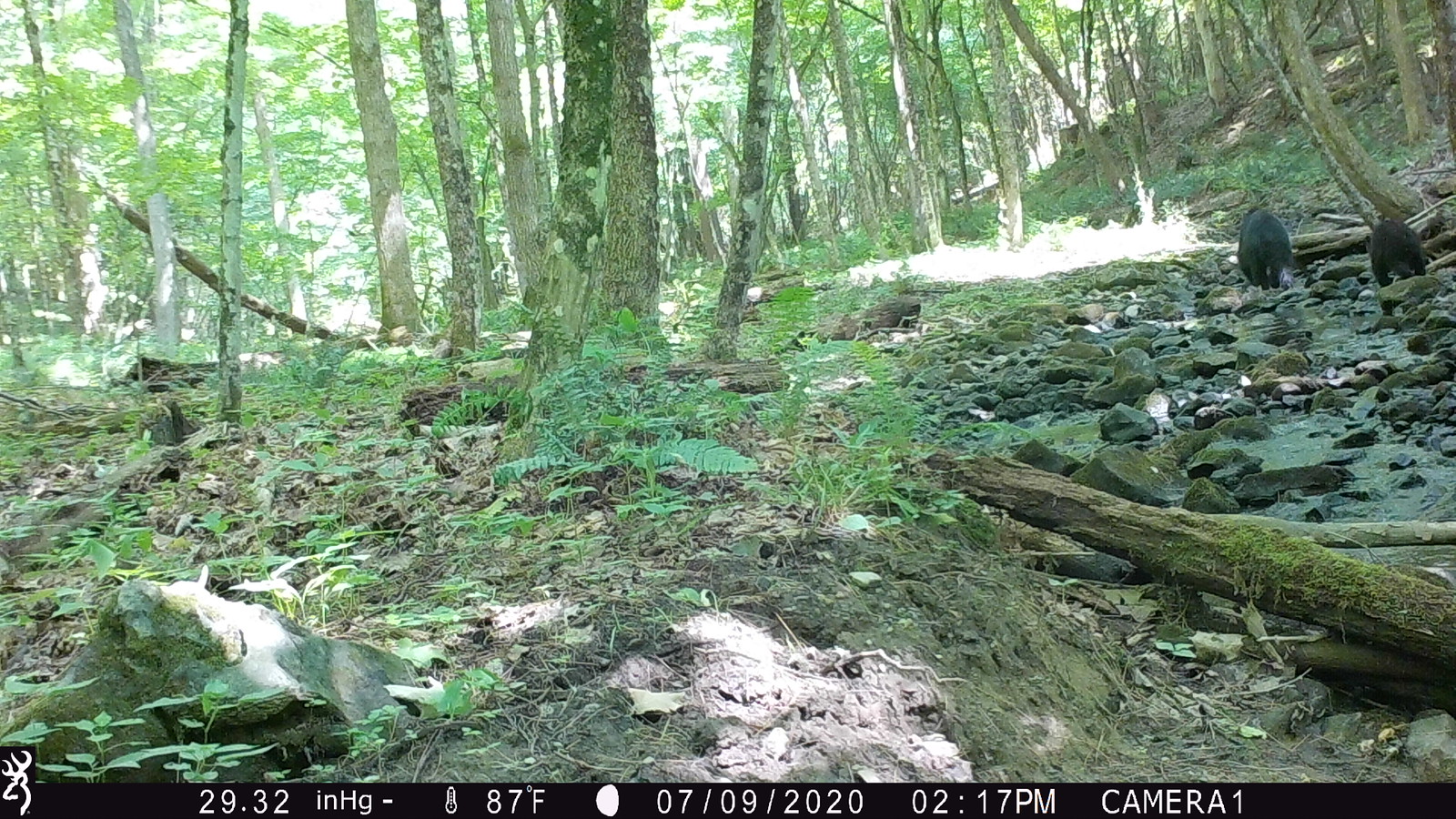There is a pretty interesting article about the history of mammals (including predatory species) in NYS from the same people who did our ecological survey at the Hawthorne Valley Farmscape Ecology Program. One of the things the article shows is how important the Adirondack park is to lingering populations of species that are otherwise gone from New York.
The game camera produced another series of bobcat shots where he is slinking through the background after some deer went through. The coat color is a very mountain-lion-esque color. Having been on the receiving end of a lot of wildlife reports from friends who know I know birds, etc., the eyewitness rule that "everything is larger when you see it" holds true. Most people don't notice animals, so when they do notice an animal - especially an exciting animal like a scarlet tanager or a bobcat - their brain magnifies the event. The other principle is that no one looks at tails. They all see the overall color and the head and if the animal looks at them, the eyes.
"That woodpecker was huge! Like a goose on a tree. I've never seen one like that before." Then they go on to describe a pileated woodpecker, which is our largest woodpecker but is smaller than a crow. No goose on a tree. But size exaggeration is an innocent product of suddenly heightened awareness of a spectacle and the resultant jolt of adrenalin.
At the same time, sightings made by farmers, hunters, hikers, etc. - people who spend a lot of time outside but are not scientists - have been elemental to establishing the presence of animals in regions where they have been thought to be extinct. Fishers are one of those animals.


 Likes:
Likes: 


 Reply With Quote
Reply With Quote








Bookmarks